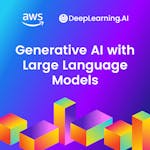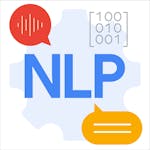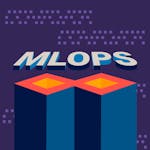Large Language Models (LLMs) Definitions : A to Z Glossary Terms
Interested in large language models (LLMs) but you keep seeing terms unfamiliar to you? This A-to-Z glossary defines key LLMs terms you need to know.
Large language model professionals are actively engaged in developing, deploying, and maintaining sophisticated language models. They utilize various programming languages, frameworks, and libraries to build applications that leverage the power of large language models for natural language processing, text generation, sentiment analysis, question-answering, and more. With a strong focus on testing and collaboration, large language model experts play a pivotal role in advancing AI-driven language understanding and interaction capabilities, revolutionizing how machines comprehend and generate human-like text.
This LLMs glossary can be helpful if you want to get familiar with basic terms and advance your understanding of LLMs.
Large Language Models (LLMs) Definitions : A to Z Glossary Terms
Interested in large language models (LLMs) but you keep seeing terms unfamiliar to you? This A-to-Z glossary defines key LLMs terms you need to know.
Large language model professionals are actively engaged in developing, deploying, and maintaining sophisticated language models. They utilize various programming languages, frameworks, and libraries to build applications that leverage the power of large language models for natural language processing, text generation, sentiment analysis, question-answering, and more. With a strong focus on testing and collaboration, large language model experts play a pivotal role in advancing AI-driven language understanding and interaction capabilities, revolutionizing how machines comprehend and generate human-like text.
This LLMs glossary can be helpful if you want to get familiar with basic terms and advance your understanding of LLMs.
Large Language Models Terms
Attention Mechanism
An attention mechanism in large language models allows them to focus on specific parts of input data while processing information, enhancing their performance on various natural language processing tasks.
BERT (Bidirectional Encoder Representations from Transformers)
BERT is a pre-trained large language model developed by Google, based on the Transformer architecture, and designed to understand bidirectional contextual relationships in text.
Contextual Embeddings
Contextual embeddings in large language models represent words or phrases based on their context in a sentence, capturing nuances and meaning variations.
Deep Learning
Deep learning is a subset of machine learning that employs neural networks with multiple layers to learn data representations and perform complex tasks.
Embeddings
Embeddings in large language models are vector representations of words or phrases that capture semantic relationships and are used to process textual data effectively.
Fine-Tuning
Fine-tuning is the process of further training a pre-trained large language model on specific tasks or datasets to adapt it for domain-specific applications.
GPT (Generative Pre-trained Transformer)
GPT is a series of large language models developed by OpenAI, based on the Transformer architecture, designed for various natural language processing tasks.
Hugging Face
Hugging Face is a popular platform that provides pre-trained language models and tools to use and fine-tune large language models.
Input Embeddings
Input embeddings in large language models convert textual data into numerical representations, making it compatible with neural networks for further processing.
Joint Embeddings
Joint embeddings in large language models learn shared representations for multiple data types, such as text and images, enabling multimodal applications.
Knowledge Distillation
Knowledge distillation is a technique in which a large language model transfers its knowledge to a smaller model to achieve similar performance with reduced computational resources.
Language Modeling
Language modeling is a task in which large language models learn to predict the probability of a word or token given its context within a sequence of text.
Memory Mechanism
Memory mechanisms in large language models enable them to store and retrieve information efficiently, enhancing their ability to handle long-range dependencies.
Natural Language Understanding (NLU)
Natural Language Understanding is a subfield of natural language processing that focuses on enabling machines to comprehend and interpret human language.
OpenAI
OpenAI is an artificial intelligence research organization that has developed various large language models, such as GPT, to advance the field of natural language processing.
Pre-training
Pre-training is the initial phase of training large language models on a vast corpus of text data to capture general language patterns and features.
Quantization
Quantization reduces the precision of numerical representations in large language models to make them more memory-efficient during deployment.
Recurrent Neural Networks (RNNs)
RNNs are a class of neural networks that process sequential data, making them suitable for tasks involving text and time-series data.
Self-Attention
Self-attention is a mechanism in large language models where each word attends to all other words in a sentence, capturing contextual dependencies.
Transfer Learning
Transfer learning is the application of knowledge gained from pre-training large language models to improve performance on downstream tasks with limited labeled data.
ULMFiT (Universal Language Model Fine-Tuning)
ULMFiT is a transfer learning approach that fine-tunes a pre-trained language model for various NLP tasks, introduced by Jeremy Howard and Sebastian Ruder.
Vectorization
Vectorization converts text data into numerical vectors, enabling large language models to process and understand natural language.
Word Embeddings
Word embeddings in large language models are dense, low-dimensional representations of words that capture semantic relationships and facilitate downstream tasks.
XLNet
XLNet is a large language model that extends the Transformer architecture and leverages permutation-based training to handle bidirectional contexts.
Yelp Dataset
The Yelp data set is a popular corpus used to train and evaluate large language models for sentiment analysis and other NLP tasks.
Zero-Shot Learning
Zero-shot learning in large language models refers to their ability to perform tasks they were not explicitly trained for by providing hints or prompts.
Conclusion
Congratulations on completing the A-to-Z glossary for Large Language Models! These terms provide you with a comprehensive understanding of the essential concepts and techniques employed in the realm of large language models. Whether you're a researcher, developer, or enthusiast, this glossary will be a valuable resource to enhance your knowledge and proficiency in large language models. Happy exploring and pushing the boundaries of natural language understanding and generation!
Learn in-demand llm skills from industry leaders.
Large Language Models Courses | Data Science Courses | Artificial Intelligence Courses | Natural Language Processing (NLP) Courses | Deep Learning Courses | Machine Learning Courses | TensorFlow Courses | PyTorch Courses | Neural Networks Courses | Data Analysis Courses | Data Visualization Courses
 Join a community of over 100 million learners from around the world
Join a community of over 100 million learners from around the world Learn from more than 200 leading universities and industry educators.
Learn from more than 200 leading universities and industry educators. 70% of all learners who have stated a career goal and completed a course report outcomes such as gaining confidence, improving work performance, or selecting a new career path.
70% of all learners who have stated a career goal and completed a course report outcomes such as gaining confidence, improving work performance, or selecting a new career path.- 100% online
- Flexible schedule
- Mobile learning
- Videos and readings from professors at world-renowned universities and industry leaders
- Practice quizzes
Can’t decide what is right for you?
Try the full learning experience for most courses free for 7 days.Register to learn with Coursera’s community of 87 million learners around the world








